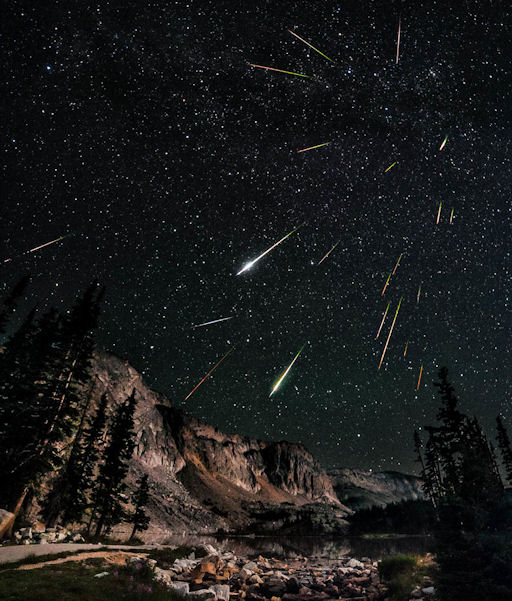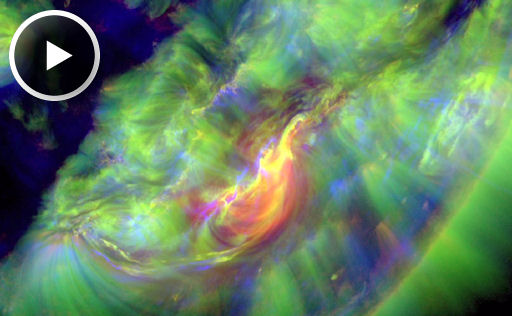Hang the Transit of Venus on your wall! Hubble-quality images from NASA's Solar Dynamics Observatory are now available as metallic posters in the Space Weather Store. | | |
SUBSIDING METEOR SHOWER: After two days of strong activity, the Perseid meteor shower is finally subsiding. For much of August 12-13, meteor rates exceeded 100 per hour. Now, according to worldwide observers, activity is only half that and continues to drop.
During the peak on August 12th, David Kingham observed dozens of Perseids over Snowy Range, Wyoming:

"I went out to Snowy Range in search of dark skies for the Perseids," says Kingham. "I wanted something special for the foreground and I knew the Snowies faced in the perfect direction to create this composite image. I started shooting at 10pm and didn't stop until 5 am, I had to change my battery every 2 hours which made for a long night. The moon rose around 1 am to light up the mountain range."
"I had a great night which was made even better because I spent it with my newly adopted dog Emmie, she was a trooper!"
Realtime Perseid Photo Gallery
Bonus: Tune into SpaceWeather Radio for live echoes from Perseid meteors flying over the US Air Force Space Surveillance Radar in Texas. Although the peak of the shower has passed, there are still plenty of "pings" to listen to.
M-CLASS SOLAR FLARE: Sunspot AR1540 erupted on August 11th, producing a long-duration M1-class solar flare that peaked around 1220 UT. NASA's Solar Dynamics Observatory recorded the extreme ultraviolet flash:

Updated: The explosion hurled a faint cloud of plasma into space. The CME is not, however, heading for Earth. Our planet should feel no effects from the explosion. Solar Flare alerts: text, phone.
Realtime Space Weather Photo Gallery
Realtime Noctilucent Cloud Photo Gallery
[previous years: 2003, 2004, 2005, 2006, 2007, 2008, 2009, 2011]
Potentially Hazardous Asteroids (
PHAs) are space rocks larger than approximately 100m that can come closer to Earth than 0.05 AU. None of the known PHAs is on a collision course with our planet, although astronomers are finding
new ones all the time.
On August 13, 2012 there were potentially hazardous asteroids.
Notes: LD means "Lunar Distance." 1 LD = 384,401 km, the distance between Earth and the Moon. 1 LD also equals 0.00256 AU. MAG is the visual magnitude of the asteroid on the date of closest approach. | | The official U.S. government space weather bureau |
| | The first place to look for information about sundogs, pillars, rainbows and related phenomena. |
| | Researchers call it a "Hubble for the sun." SDO is the most advanced solar observatory ever. |
| | 3D views of the sun from NASA's Solar and Terrestrial Relations Observatory |
| | Realtime and archival images of the Sun from SOHO. |
| | from the NOAA Space Environment Center |
| | the underlying science of space weather |

